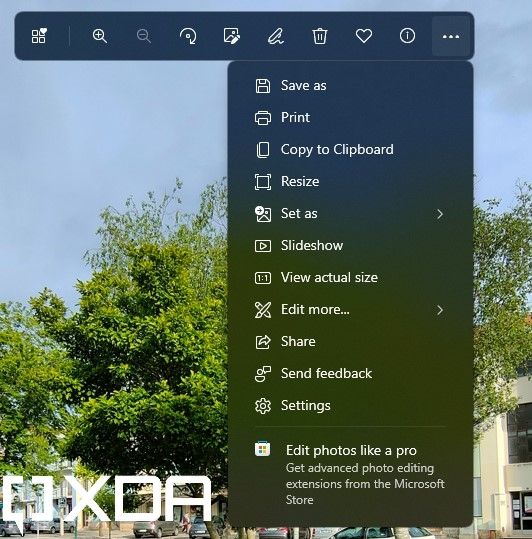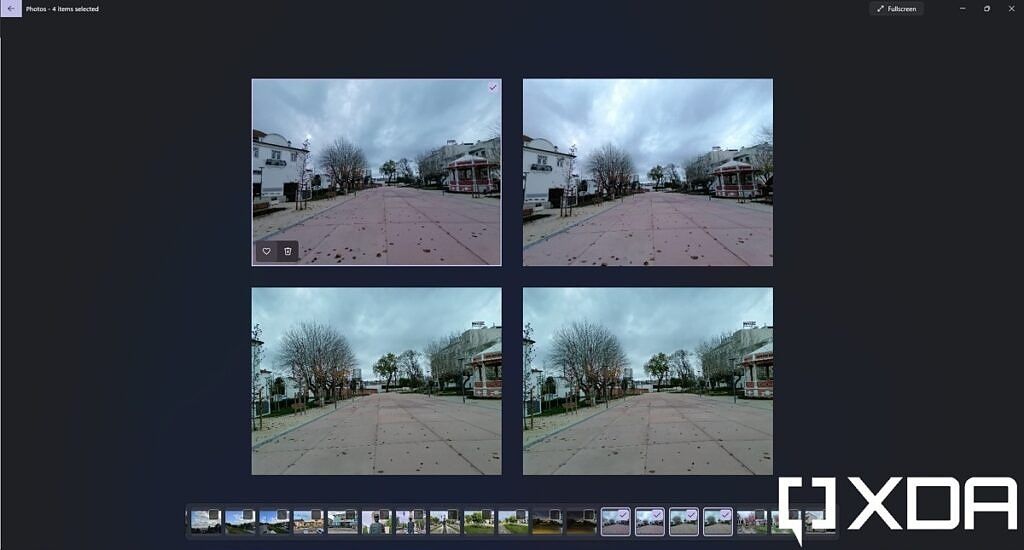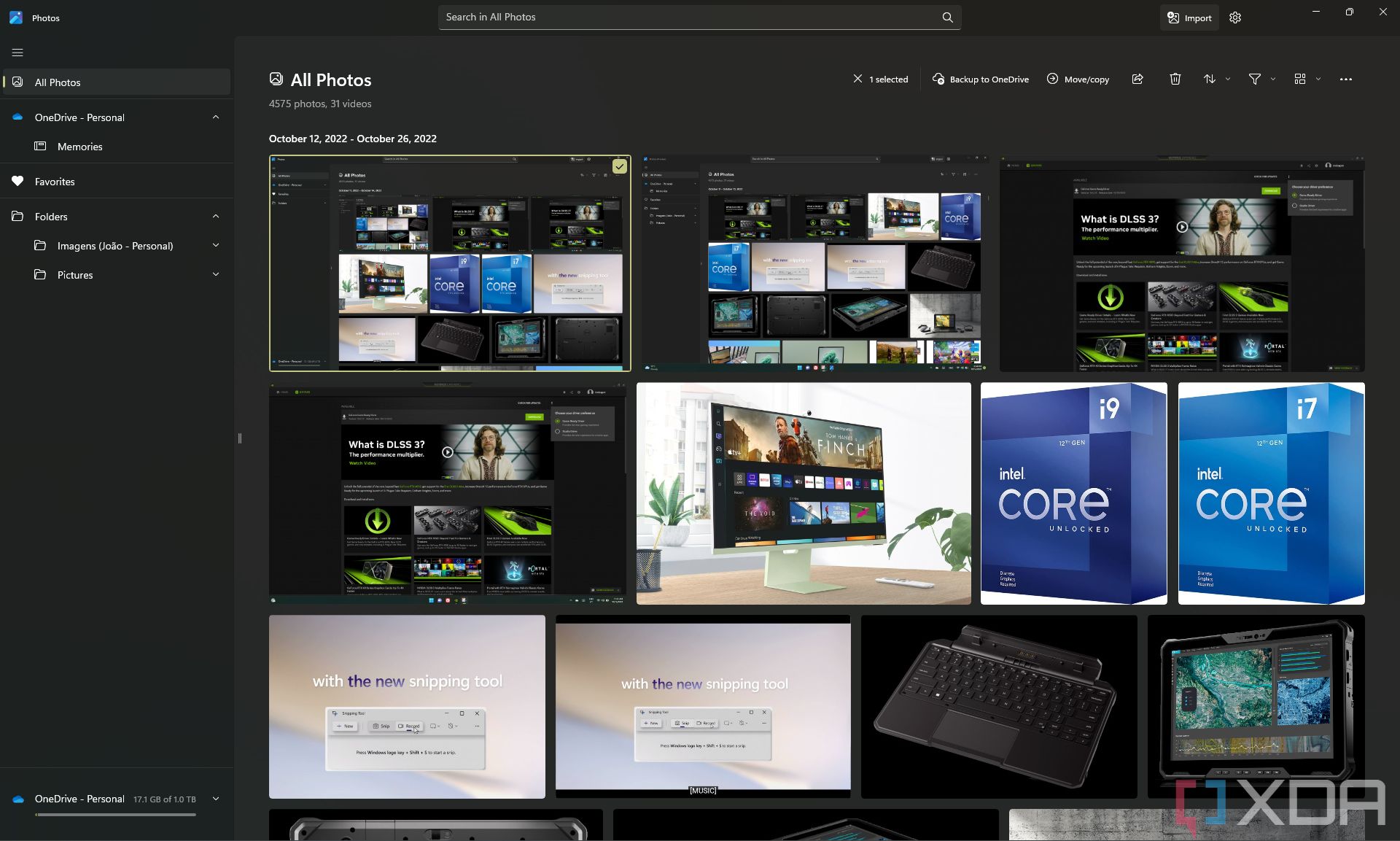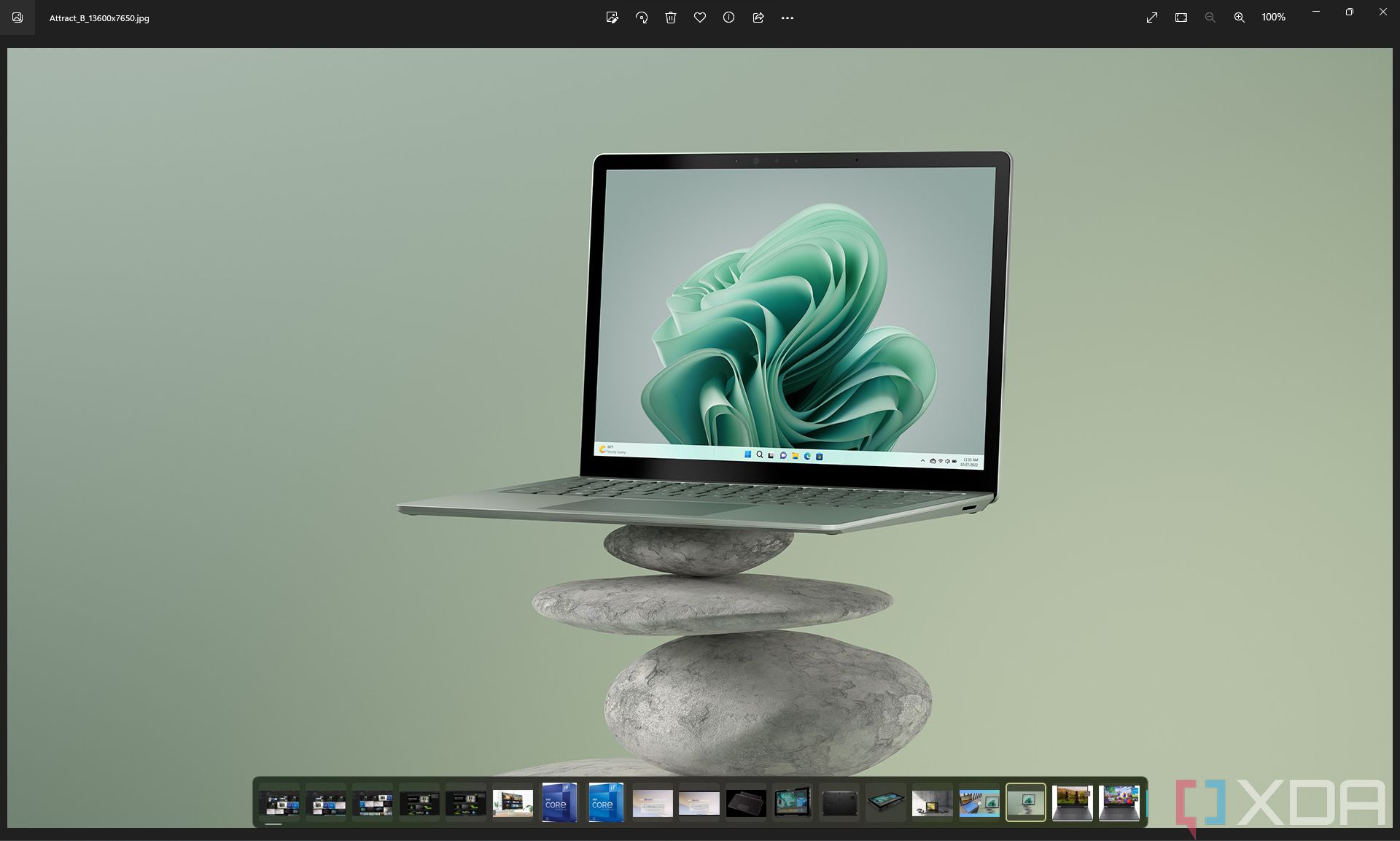Windows 11 has been available for close to a year now, and it recently received its first major update with the Windows 11 2022 Update, or version 22H2. Both bring major changes to the table, and many of the included apps have also been redesigned, some more than others. That includes the Photos app, which has seen some design changes already in the initial Windows 11 release.
Later this year, Microsoft will also roll out a huge update to the Photos app with much more significant changes. For now, though, this is only available in preview for Windows Insiders enrolled in the Dev channel. Still, we want to break down what you should expect.
Photos home page and sections
Launching the Photos app won’t immediately look very different from the Windows 10 version. In fact, most of the content here isn’t new; only the UI has been tweaked slightly. You start off on the Collection page, which shows you every picture stored on your PC and OneDrive (if you have a Microsoft account connected). These are shown in chronological order, and you can see a timeline on the right side of the app window. At the top, there’s a set of AI-based photo groups, which are based on themes, dates, or places.
In the top left corner of the app, there are other views you can choose from.
- Albums lets you view albums you created yourself, as well as any albums the Photos app creates automatically based on dates, locations, and so on.
- The People tab uses AI to recognize people (if you enable it) in your pictures and groups all the pictures of the same person together.
- The Folders tab lets you see folders on your device or OneDrive, so you can browse your pictures more traditionally.
There’s also the video editor, but we’ll get to that later. Next to the different tabs is a search bar, letting you search for people, places, or things in your pictures to find them more easily.
Finally, over on the right corner are a few more options. The New button lets you start a video project or create a video automatically based on the images you choose, import a backup video project, or create a new album. There’s an Import button to add images to your library, specifically from external devices, and the ellipsis button has some additional options like accessing the app settings or starting a slideshow of the images in your current view.
Viewing images in the Windows 11 Photos app
The image viewer in the Windows 11 Photos app is where most of the changes are if you’re already familiar with the Windows 10 app. As you’d expect, opening an image takes up the entire app window, but now, you have a button near the top right corner that lets you make that image fullscreen. Of course, that’s far from the biggest change.
Near the top and aligned at the center, there’s a new toolbar where you can find common options. Here, you can zoom in and out, rotate, edit, or draw on an image. You can also delete it, add it to your favorites, or view information about the photo, such as when and where it was taken, what camera was used, and so on.
The ellipsis button gives you many more options, like printing, copying the image to the clipboard, resizing, setting an image as a desktop background, and more. You can also make more “advanced” edits, like adding 3D animations or text to an image, which turns it into more of a video.
That’s not all that’s new, either. Near the bottom of the picture, there’s a carousel showing more pictures from your library. The pictures shown here are the same ones you’d see in the grid view before opening an image, and you can easily switch between different images this way.
Another thing you can do is select multiple images and view them all on a single screen. This can be useful for choosing your favorite pictures from a group, especially if some pictures look similar to each other. You can easily delete images or add them to your favorites this way, but you can’t take any other actions when viewing multiple images at once.
Editing images in the Windows 11 Photos app
The image editing experience is also the same in the Windows 11 Photos app compared to Windows 10. Aside from the UI tweaks we see everywhere else on Windows 11, this is exactly the same. Of course, there’s the potential for new tools to be added with extensions, but we don’t know what that will look like yet. Many of the editing tools are available in different places, so we’ll go over them separately.
Basic edits
When you click the Edit image button in the toolbar mentioned above, you get three sets of options near the top of the app window, aligned at the center. The first set is for cropping or rotating the image. You can choose from different aspect ratios or a custom one, straighten the picture, rotate it, or flip it.
The second set of options includes a variety of filters, as well as the ability to automatically enhance your picture. This will adjust the brightness, contrast, and sharpness, and you can choose the intensity of enhancements to make it look the way you want it to. The filters apply different color effects to the image, and you can adjust their intensity to your liking. Finally, there’s the adjustments set, where you can manually adjust the brightness and saturation of the image. You can also increase or decrease the clarity or add a vignette.
Drawing
If you want to draw on one of your images, click the Draw button when using the image viewer. You can choose whether you want your doodles to resemble a ballpoint point, a pencil, or a calligraphy pen, and each option lets you choose from a variety of colors. You can also adjust the thickness of the pen. Of course, there’s also an eraser if you need it.
3D effects and animations
Another way you can edit photos (and videos) is by adding 3D objects, animations, or animated text. This turns your photo into more of a short video. To get started, click the ellipsis button in the image viewer, then go over to Edit more and choose what you want to add. If you choose Add 3D effects, you can add animations like rain or fire to the picture, as well as 3D objects. If you choose to add animated text, you can add text in different layouts, create a zoom or pan effect, and apply filters to the image.
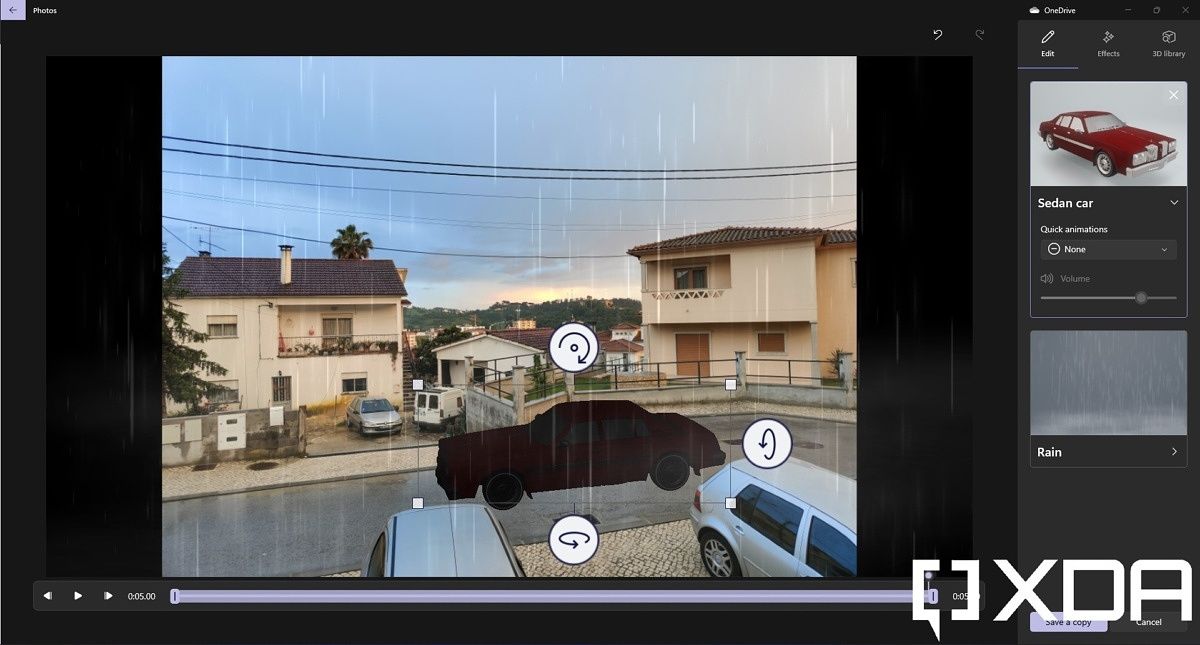
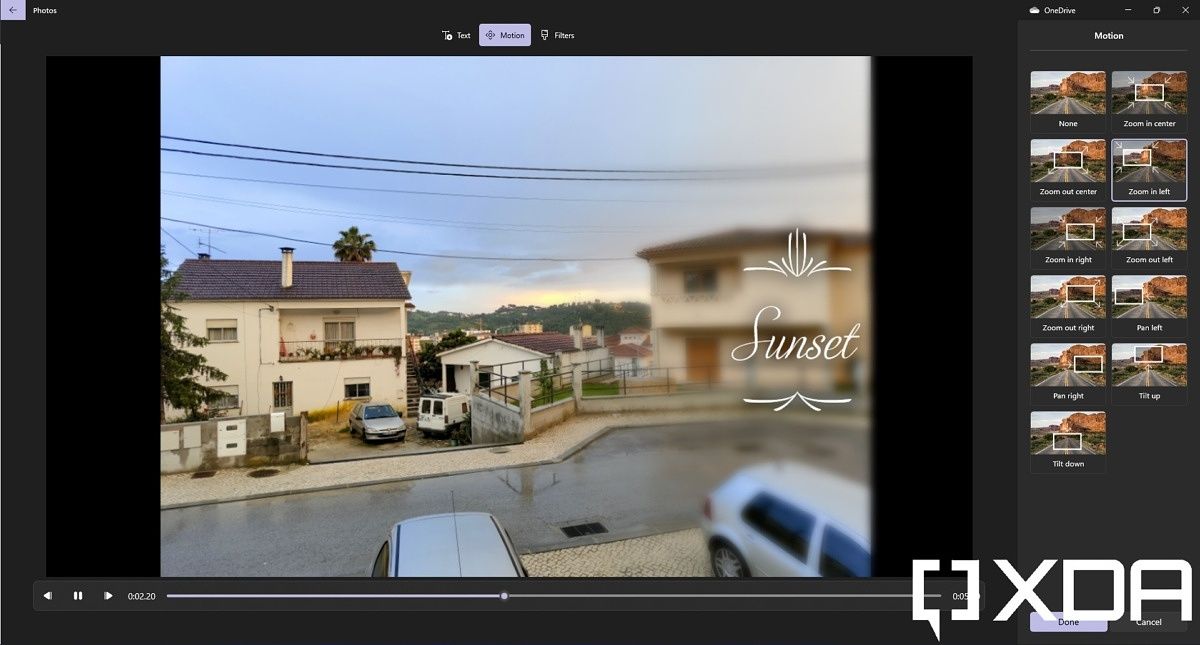
The video editor in Windows 11 Photos
Finally, let’s look at the video editor in the Windows 11 Photos app. Again, this is something that hasn’t really changed from Windows 10 aside from overall UI tweaks. You’ll see rounded corners and new icons, but nothing else. When you switch to the video editor tab, you can create a new video project or see your recent ones.
Once you open a project, you can add images and videos to its library, and from there, you can add them to the “storyboard” or the video timeline. You can choose how long still images should appear, and for videos, you can trim them or increase their playback speed.
Just like with the image editor, you can add 3D effects, motion, text, and more to individual objects on the storyboard. In videos, you can even attach 3D effects to a specific point on the video, so it stays in the same place as you move around. You can also create animated title cards and add them at different points in the video.
In the top right corner, you can also add background music to the video. You can choose from a selection of included music styles, or you can add custom audio, such as your own music or narration for the video.
The ellipsis menu also has additional options, like adding a theme to the video, including music, effects, and title card/text styles. If you’ve already created title cards and text effects, this will apply to them. You can also change the aspect ratio of the video, though you can only choose between 16:9 and 4:3 here.


Once you’ve added everything you wanted and made all the edits, you can export the final video using the Finish video button near the top right corner. You can export at 540p, 720p, or 1080p, depending on the quality and file size you’re aiming for.
Settings
To round things out, let’s take a quick look at the app’s settings. You can access these using the ellipsis menu. There are some noteworthy settings here, such as the ability to disable viewing pictures from your OneDrive cloud storage. You can also choose to see pictures from all your OneDrive folders or only the default Pictures folder.
Other options include viewing duplicate images as a single file, enabling or disabling people recognition in Photos, enabling or disabling automatic albums, or changing how the mouse wheel works. One option available here that won’t work is changing what the app tile displays because Windows 11 no longer has tiles. This is a holdover from Windows 10, and it should be removed at some point in the future.
The new Photos app in Windows 11 version 22H2
As we mentioned at the top of the article, there’s an even bigger update coming to the Photos app later this year, and Windows Insiders can try it right now. It should be widely available in November, so we’ll review the changes here.
The new gallery view
The new Photos app will come with a completely revamped gallery view and improved navigation. The main stage of the app still shows you your recent pictures, but you’ll see a navigation pane on the left side of the screen with the folders on your PC and OneDrive, so you can more easily find the media you’re looking for. You also have a section for your favorites, as well as a couple other sections for OneDrive and iCloud. At the bottom of the pane, there’s also information about how much storage you have left on your OneDrive.
Microsoft also removed the carousel at the top of the app containing suggested content, so the focus is on your files alone. The tabbed navigation at the top is also gone, and the title bar is mostly used to house a search bar along with buttons to import photos from connected devices and access the app’s settings.
The gallery view itself is pretty different now. Photos are no longer separated by date, though you can still see the date range of the pictures you’re looking at above the images themselves. All the photos are now displayed together without any visual interruptions, and there are new viewing modes, too. The new River mode lets pictures show up closer to their original aspect ratio, but you can switch to a Square mode if you want something that looks more standardized and clean. Additionally, you can now filter to see photos or videos.
There are some changes to how interacting with the app works. Now, when you click an image, you select it, and you have to click twice to open it. Selecting a photo gives you access to new options, like moving it to a different folder or, for locally-stored files, the ability to back it up to OneDrive. When you open a picture, it now opens in its own window, too, instead of taking over the gallery view.
OneDrive and iCloud integration
As we mentioned above, there are a couple of extra sections on the navigation pane on the side, but they’re pretty big additions. The first is integration with iCloud Photos, which means you can see all your photos stored in iCloud using the Photos app on Windows 11. You’ll still need to install the iCloud app from the Microsoft Store, but once you do, you’ll be able to see your pictures here, bringing photos from your devices together more easily.
Additionally, there’s OneDrive integration, which lets you see your OneDrive memories. These are automatically-generated albums on OneDrive that are based on a specific date or location, so you can revisit important moments in your life. Unfortunately, clicking a OneDrive memory takes you to your browser to see the photos, so the integration here is somewhat lackluster.
Viewing photos
The photo viewing experience with the new Photos app is mostly unchanged from the previous version of Windows 11’s initial release. The photo you’re looking at naturally takes up the most space, and above it, you see controls that let you edit or delete a photo, add it to your favorites, share it, and so on. The ellipsis menu contains some additional options like printing the photo.
However, there are some visual changes here. The photo viewing window now uses the Mica material, so you can see the colors of your desktop background shine through the empty areas of the window. The carousel at the bottom also uses a transparency effect instead of being fully opaque. And since the photo viewer now opens in a separate window, the button in the top left corner isn’t an arrow; it’s just a button that switches you back to the gallery view without closing the photo viewer.
Editing photos
If you want to make edits to your photos, there are some changes here as well. All the editing options are available using the Edit button in the toolbar at the top, and they’re split into four categories: Crop, Adjustment, Filter, and Markup. All of this is the same as with the previous version of the app, so you can crop, rotate, adjust the angle of a photo, apply filters, and draw on a picture.
However, some more advanced features have been removed, like the ability to add animated and 3D effects. These features relied on the video editor in the Photos app, which is no longer available. And speaking of which…
No more video editor
A big change to this version is that it no longer contains a video editor, and that’s because Microsoft now ships Clipchamp with Windows 11. Clipchamp is a much more advanced program with multi-track editing and more intricate features. It even includes some themes and stock assets for you to use in your videos. We have a guide on how to use Clipchamp if you’d like to learn more about that.
Settings
The settings page in the new Photos app has also been significantly revamped and simplified. You can change a lot of options, including the app’s theme (if you want it to be different from your system setting), whether the app should ask for permission before deleting a file, and more. You can disable access to your OneDrive or iCloud, and there’s also a link to download the Photos Legacy app, which is how you can use the old version of the Photos app if you prefer for whatever reason.
That’s about all you need to know about the Photos app in Windows 11. There isn’t a lot that’s changed with the Windows 11 update, but the changes that were implemented are welcome, like the new toolbar and the ability to view multiple images at once. We have yet to see what extensions can add to the app’s capabilities, but the potential is exciting. As we’ve mentioned, there are even bigger changes on the way, and we’ll be sure to update this article as soon as they’re available.
Want to check out these and other Windows 11 features? We have a list of all the PCs that will support the Windows 11 upgrade, and you may also want to check the system requirements. And if you want to get the new version of the Photos app that’s coming soon, check out our guide to get the Windows 11 2022 Update, as you’re probably going to need it if you want the new features.
[ad_2]



